AUSTRALIA’s red meat industry has set itself a target to double the value of sales within the next 10 years.
A number of producer questions were raised about the origins of the target and how it will be measured when it was reiterated in industry service provider Meat & Livestock Australia’s five year strategic plan released in June (right).
In response to questions raised by producers, which included a letter to media from Injune producer and former Cattlemen’s Union board member Ashley McKay, Meat & Livestock Australia has provided further details explaining the target, why MLA produces a Strategic Plan and how it aligns, and is guided by, the wider goals and plans of industry.
Red Meat 2030
The target of doubling the value of Australia’s red meat sales by 2030 was included in the overall Australian red meat industry strategic plan for 2020 to 2030 – Red Meat 2030 (below) – which was released by the Red Meat Advisory Council (RMAC) in 2019.
Red Meat 2030 was developed by RMAC, which comprises the chairs of the seven red meat peak industry councils (the Australian Livestock Exporters Association (ALEC); Australian Lot Feeders Association (ALFA); Australian Meat Industry Council (AMIC); Cattle Council of Australia (CCA); Sheep Producers Australia (SPA) and Goat Industry Council of Australia (GICA)).
As stated in the Red Meat 2030 document, the development of the plan involved consultation with approximately 300 stakeholders, including levy payers, representatives from prescribed industry bodies, state farming and representative organisations, customers and community members.
Developed over a 10 month period, the consultation process included:
- 12 workshops
- 6 focus groups
- 3 webinars
- 10 site visits
- 14 in-depth interviews
- 6 other industry engagements
The three red meat Research and Development Corporations (MLA, the Australian Meat Processor Corporation and LiveCorp) are each charged with helping to deliver the 10 year plan set by the peak industry councils through RMAC for the red meat industry.
When Red Meat 2030 was released in October 2019, MLA released a statement saying its next five year strategic plan from July 2020 would be guided by the overarching Red Meat 2030 red meat industry strategic plan, in continued consultation with producers, peak industry councils and other stakeholders.
Target to double value of red meat sales by 2030
In July 2019 the National Farmers Federation announced a goal for Australian agriculture, which was supported by the Morrison Government, to grow the value of Australia’s farm sector output to $100 billion by 2030.
In line with that goal, the Red Meat 2030 red meat industry strategic plan, released in October 2019, set a target for the red meat industry to double the value of Australia’s red meat sales by 2030.
If achieved that goal would result in Australian red meat sales totalling $57 billion in 2030, which would exceed the red meat industry’s share of the NFF and Prime Minister’s $100 billion-dollar target for Australian agriculture, RMAC chair Don Mackay explained at the launch.
For the goal to be achieved it was essential that the Government step up and provide required policy and investment support, which included reducing red tape and technical trade barriers negatively impacting the industry, he said.
The Red Meat 2030 plan also set several other targets for the red meat industry to acheive by 2030, including:
- Reducing the $1 billion dollars lost to the Australian economy through the imposition of technical trade barriers;
- Tripling the amount of capital invested in the sector;
- Halving the cost of industry and government-led regulation;
- Achieving carbon neutrality across the sector;
- Doubling the percentage of project funding for extension for red meat;
- Implementing systems to reward red meat producers for their environmental services;
- Positioning red meat as a ‘superfood’ and the ‘highest quality protein of choice worldwide’.
In terms of how the 2030 target would be measured, the document states that the target of doubling red meat sales by 2030 will be measured “on a baseline of 2020”.
That would mean, as mentioned earlier, increasing Australian red meat sales to a total value of $57 billion in 2030. (In 2019 the value of Australian red meat sales stood at $28.5 billion – $11 billion in domestic sales and $17.2 billion in export sales).
(Included just for interest: What would happen to industry value based on inflation alone over the next 10 years? The annual rate of inflation in Australia averaged around 1.8pc per year over the past 10 years. Were that rate to continue, today’s red meat sales value of $28.5 billion would rise to about $34 billion by 2030 through inflation alone, as calculated using this resource)
MLA Strategic Plan 2025
Under its funding agreement with the Australian Government, MLA is required to produce a three- or five-year Strategic Plan that outlines key investment priorities, objectives and planned outcomes for the period.
In comments to Beef Central, MLA said the reasons for producing a strategic plan went beyond meeting stipulated requirements.
The process was also integral to providing transparent and clear communication around how levies are invested, as well as informing red meat producers, and the wider red meat and livestock industry, about how MLA plans to deliver change for the industry over the next five year period and beyond.
Under its funding agreement, MLA’s Strategic Plan is required to demonstrate clear linkages with the most recent meat industry strategic plan – in this case Red Meat 2030.
 “Our strategic plan is closely aligned with Red Meat 2030 – and its shared vision and direction for the industry, to double the value of Australian red meat sales as the trusted source of the highest quality protein,” MLA Managing Director Jason Strong said.
“Our strategic plan is closely aligned with Red Meat 2030 – and its shared vision and direction for the industry, to double the value of Australian red meat sales as the trusted source of the highest quality protein,” MLA Managing Director Jason Strong said.
“This is the whole-of-industry 10-year plan and has been widely endorsed across the supply chain.
“The next five to ten years can be a period of real opportunity for our industry, but we must collaborate more effectively in order to meet our objectives.
“MLA is taking the lead in this regard as we embark on delivering ‘fewer, bigger and bolder’ programs of work on behalf of levy payers.
“By making connections across the Red Meat 2030 priorities (Our People, Our Livestock, Our Environment, Our Markets, Our Systems and Our Customers, Consumers and Communities) we identified six strategic focus areas that will help industry towards achievement of its 2030 vision.
“These strategic focus areas are:
- Decisions informed through data and insights
- Targeted investment to address the industry’s big, complex challenges
- Enabling new sources of revenue
- Developing new high value products that allow us to maximise the whole carcase
- Beyond today’s farm gate
- Strengthening our core.”
MLA Strategic Plan and Red Meat 2030 program delivery
MLA said its own five-year strategic plan provides an important link between the red meat industry strategic plan (Red Meat 2030) and the programs it will deliver, as outlined in the Annual Investment Plan (AIP) it publishes each year.
MLA’s AIPs are prepared each financial year to guide the practical delivery of MLA’s long‑term investment priorities and outcomes, as set out in MLA’s Strategic Plan. They provide the one‑year program‑level view, and the MLA AIP 2020–21 will outline the starting year to the new strategic plan:
Image: From MLA Strategic Plan 2025 p17
MLA’s Strategic Plan provides producers, levy-payers and key stakeholders with MLA’s strategic direction and high-level investments on how MLA plans to deliver the transformational change needed to double the value of red meat sales over the next decade.
How success of MLA Strategic Plan is measured
MLA said each of its strategic focus areas have outcome statements with supporting Key Performance Indicators (KPIs), measurements and benchmarks.
Progress against each KPI is reported in each Annual Report. Every five years an independent performance review into MLA also tracks its performance against KPIs over that time frame.
The following example from the 2020-2025 strategic plan relates to KPIs for the ‘development of new revenue streams’ (p27):
The following example relates to KPIs for ‘capturing value’ (p29):
Five-year independent performance review
The most recent five-year independent performance review into MLA (for 2016-2020) was conducted by Acil Allen Consulting and released in April 2020.
Findings included:
click here 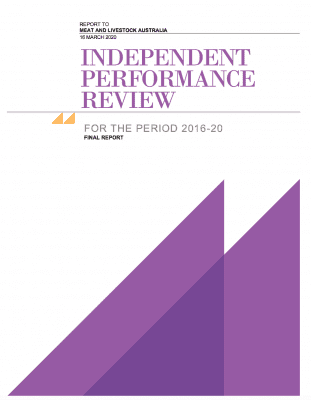 “MLA is a large, complex and relatively mature organisation with ample evidence to suggest that it is well-governed and managed.”
“MLA is a large, complex and relatively mature organisation with ample evidence to suggest that it is well-governed and managed.”
“MLA has met the substantive obligations of its Statutory Funding Agreement and obligations to levy payers and industry to deliver high quality research & development and marketing outcomes, in a cost-effective way.”
“Over the review period, MLA has enhanced efforts to engage meaningfully with stakeholders, to deliver benefits to industry across the red meat supply chain.”
“MLA’s approach to assessing the economic impact and value of its research activities aligns with current best practise, however MLA should increase its efforts to assess social and environmental benefits and where possible quantify these.”
In terms of delivery against Key Performance Indicators (KPI), the average success rate over the last three years for MLA was 76 percent.
Over the three financial years during the review period, MLA met or exceeded its annual benchmarks on 55 occasions. MLA failed or missed annual benchmarks on 17 occasions.
Strategic Plan ‘not developed in isolation’
MLA said consultation with stakeholders was a central component of the development of its Strategic Plan.
It said a range of different models where used to ensure the voices of stakeholders were captured.
Stakeholders included red meat and livestock producers, the Department of Agriculture, Water and the Environment, peak industry councils, red meat research and development corporations, research partners, commercial participants and major pastoral groups.
Consultation included workshops, one‑on‑one meetings, discussions with representatives from across the cattle, sheep and goat industry supply chains to explore their priorities and gather input into MLA’s investment strategy.
MLA said it also shared its development process with levy payers, producers and other stakeholders via MLA’s online communication channels and invited feedback on the emerging themes.
MLA Strategic Plan 2020-2025 strategy development timeline
“All of these conversations provided valuable contributions to our strategy,” an MLA statement said.
“The priorities, issues and outcomes from our consultation were considered in relation to MLA’s purpose, and formed a key input into the development of this plan.”
It said other inputs included:
- the Australian Government’s Rural Research, Development and Extension Priorities
- the Australian Government’s Science and Research Priorities
- MLA market and industry trend data
- Other reports and data that provide insight on the current and future operating environment
RELATED ARTICLE: “We’re lining up for a 3-5 year period like we’ve never seen before”: Jason Strong


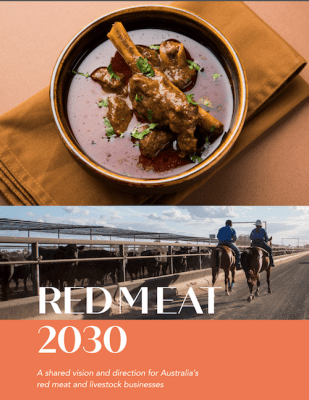
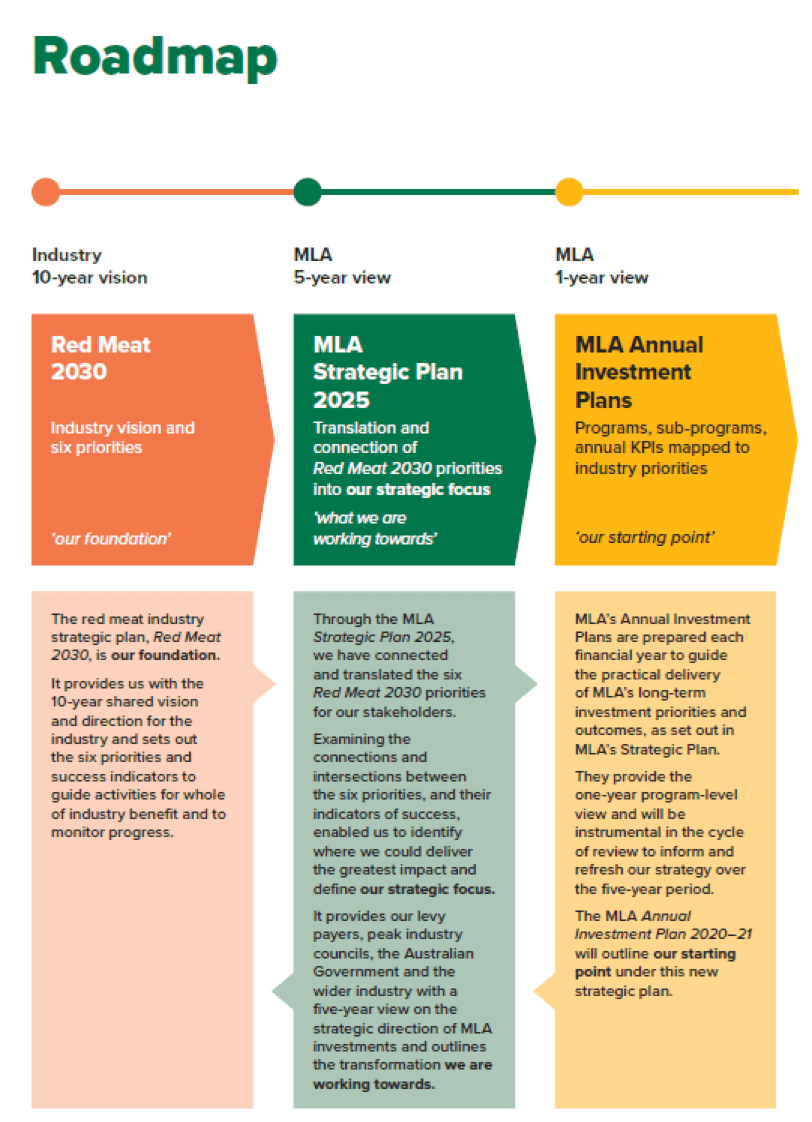
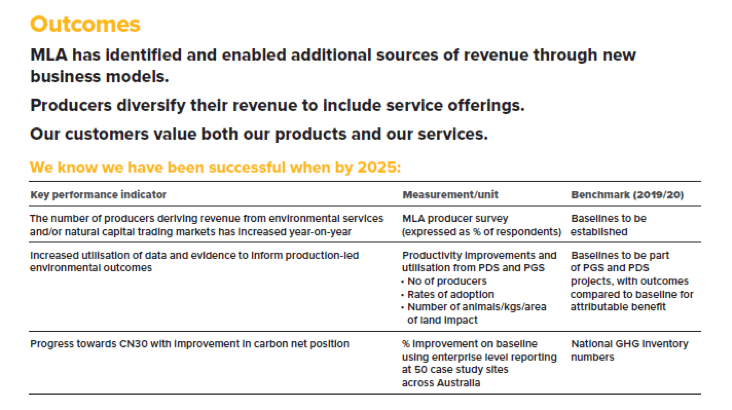
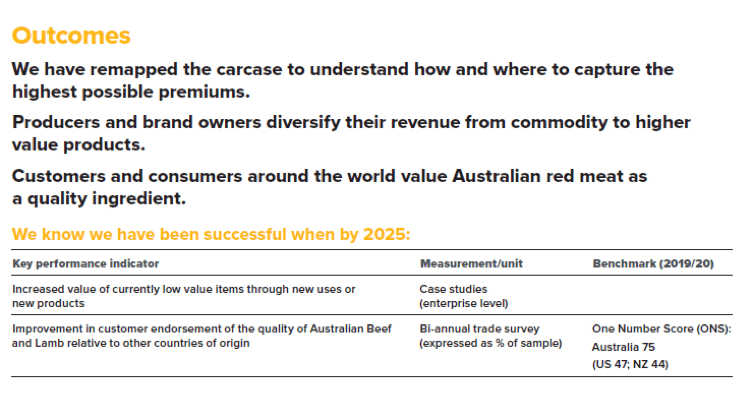
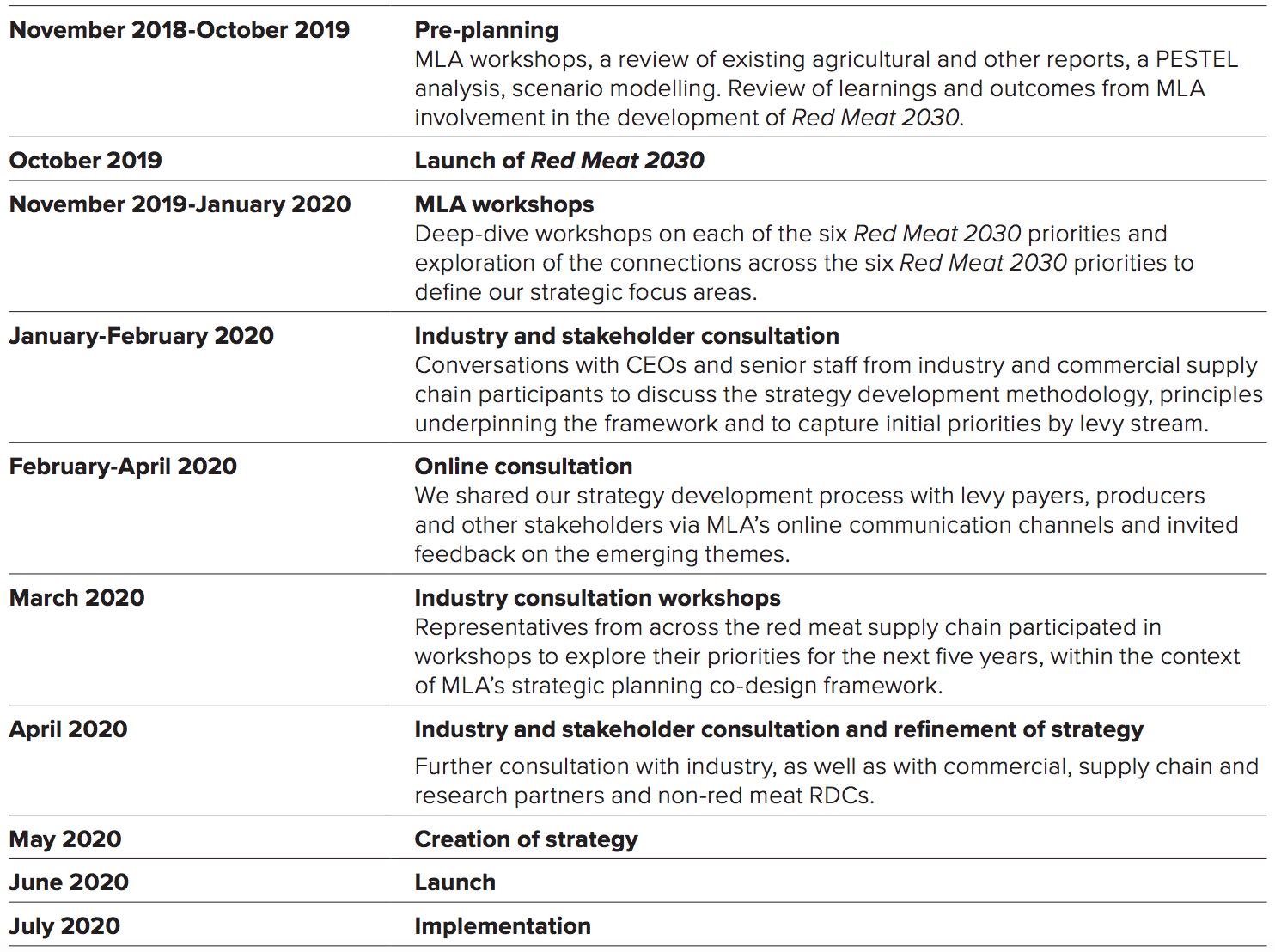
My! My! Jason. Thank you for the array of plans, programmes, actions, senarios and KPI’s provided. Not even Sir Humphrey could have done better. Some people will form the view that you have not answered to any of the issues raised, while others will form a view that the mob in control have lost the plot. It is clear that we are stuck with limiting beef consumption to one meal a week as a promotional principle, as you simply ignored that question.
Likewise it is clear that we can be kicked off the supply chain if we dare to put a firebreak through the newly created magical enchanted forest that co-exists with the fairies at the bottom of our garden.
Thank you for enlightening us to the musings, methods and moments of the bureaucratic nightmare that we fund. Perhaps someof us, and there are plenty, who have several million trees and shrubs on our land might get a cookie as a reward, while the trees increase in number, height and volume and take the whole cake off us.
Well Done!!!
Ashley, for yours and other readers’ information, work is already in progress for an upcoming article specifically addressing the consumption issue, and related matters. Editor